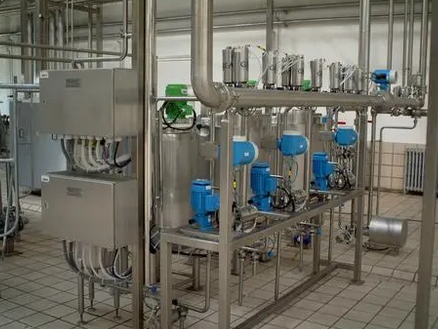Selection of pump fluid handling systems in food processing plants
In food processing equipment, the selection of pump fluid handling systems is a complex and critical process, which is directly related to food safety, hygiene and production efficiency. The following is a detailed analysis of the selection of pump fluid handling systems from several aspects:
1. Safety and hygiene
Material selection:
The materials of pumps used in food processing must meet food safety standards, cannot react chemically with food, and cannot affect the taste, color and other characteristics of food.
Stainless steel is one of the commonly used materials because it is corrosion-resistant, easy to clean and will not contaminate food.
Make sure there are no cracks and dead spots in the pump and piping system to prevent fluid retention and bacterial growth.
Avoid contamination:
Choose a pump type that can prevent product contamination, such as a pump with good sealing performance.
Consider the convenience of cleaning and disinfection in the system design to ensure that residues and bacteria can be thoroughly removed.

2. Process adaptability
Fluid properties:
Choose a suitable pump type based on the properties of the food fluid (such as viscosity, temperature, corrosiveness, etc.). For example, for high-viscosity fluids, you may need to choose a screw pump or a gear pump; for fluids containing particles, you need to consider the pump's wear resistance and anti-clogging ability.
Process requirements:
Select the appropriate pump type and configuration according to the specific requirements of the food processing process (such as flow, pressure, temperature, etc.).
Consider the flow stability and pressure regulation ability of the pump to meet the needs of different process stages.
III. Operation cost and maintenance
Energy efficiency:
Select a pump type with high energy efficiency to reduce energy consumption and operation cost.
Consider the energy-saving technology and intelligent control system of the pump to further reduce the operation cost.
Maintenance and maintenance:
Select a pump type that is easy to maintain and maintain to reduce maintenance costs and downtime.
Consider the supply of spare parts and the quality of after-sales service of the pump to ensure the long-term stable operation of the equipment.
IV. Supplier selection
Reputation and quality:
Select a supplier with good reputation and guaranteed quality.
Investigate the supplier's production capacity, technical level and quality management system to ensure reliable product quality.
Service and support:
Select a supplier that can provide perfect after-sales service and technical support.
Consider the supplier's training service and emergency response capability so that it can be solved in time when the equipment fails.
V. Specific pump type recommendation
In food processing equipment, commonly used pump types include centrifugal pumps, screw pumps, gear pumps, etc. The specific pump type to be selected needs to be comprehensively considered based on factors such as the properties of the fluid, process requirements, and operating costs. For example:
Centrifugal pump: Suitable for conveying clean, particle-free liquids. It has the advantages of simple structure, easy operation, and stable flow.
Screw pump: Suitable for conveying high-viscosity or particle-containing fluids. It has the advantages of smooth delivery, no pulse, and strong self-priming ability.
Gear pump: Suitable for conveying high-viscosity lubricating fluids. It has the advantages of compact structure, reliable operation, and easy maintenance.




